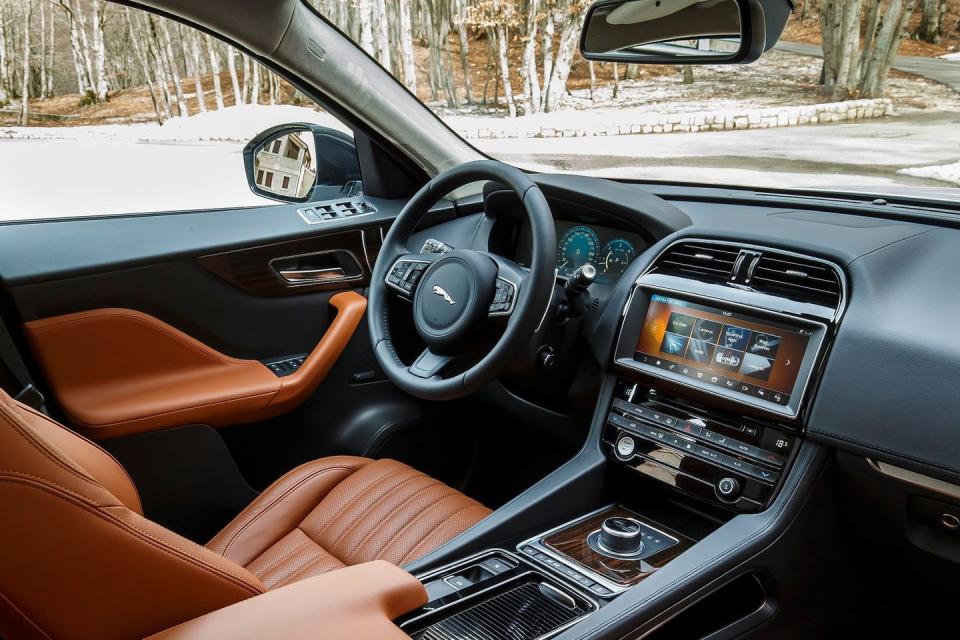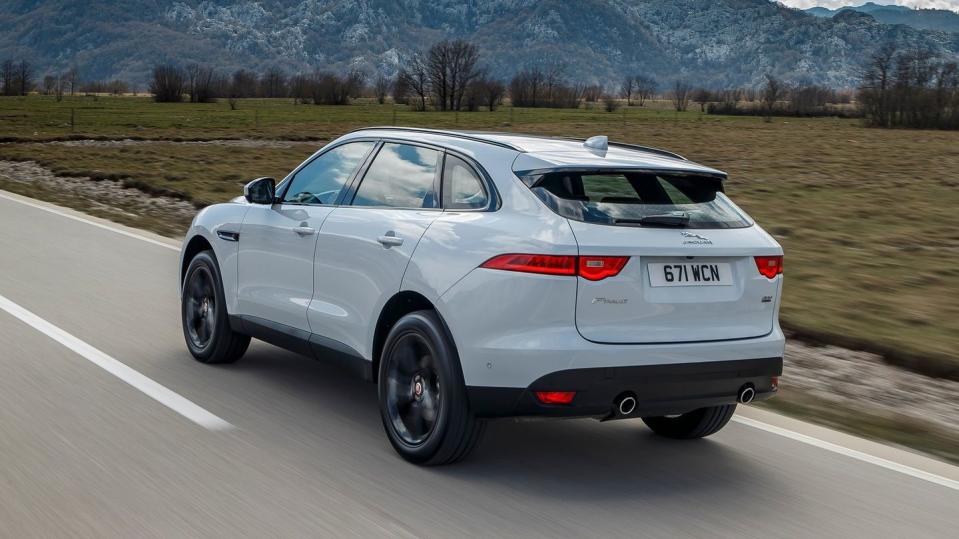What's a Jaguar F-Pace Like With a Turbo-Four?

Each decade seems to have its own family-car-of-the-moment. For the 2010s, it's undoubtedly the mid-size crossover. And in 2018, these mid-size crossovers are very often powered by 2.0-liter turbocharged four-cylinder engines. That makes this 2018 Jaguar F-Pace 30t a very normal car.
Which is a strange thing for a Jaguar-this is a brand whose reputation was built on cars that were never quite mainstream. But for an automaker to survive today, it has to build a car like this, especially if it wants to compete with other luxury brands. A four-cylinder SUV might be an odd thing in the brand's canon, but it's a car Jaguar has to make.
And perhaps Jaguar has something to offer in this often-boring segment. Can a four-cylinder crossover live up to Jaguar name?
Where looks are concerned, you'd have to say so. The F-Pace looks as fresh today as it did when it was previewed in 2013 as the C-X17 concept. It's not the prettiest car Jaguar sells-even if you took out the F-Type altogether-but it's one of the best looking luxury crossovers on the market. Jaguar design boss Ian Callum and his team had a hell of a challenge in translating Jaguar grace into a tall, upright package, and I think they nailed it.

The 30t badge on the hatch means this F-Pace is equipped with a 296-hp version of Jaguar's new Ingenium inline-four. It's one of the most powerful four-cylinders on the market today, and it's torquey too, with 295 lb-ft of torque. Those figures aren't far behind Jaguar's 3.0-liter V6 either, which offers 380 hp and 332 lb-ft of torque, but these two engines are world's different from one another.
Where the V6 is sweet and smooth, the four-cylinder is gruff. It offers good performance-Jaguar quotes a 5.7-second 0-60 mph run-but it's hampered by wonky gearbox programming. Too many times, I found myself waiting too long for a downshift when I gave it a boot of throttle. Like so many modern luxury cars, the F-Pace uses ZF's eight-speed automatic, which is only as good as the people that calibrate it. I thought the gearbox worked well with the responsive V6, so perhaps Jaguar's engineers should spend more time tailoring it to the naturally laggy four.
The inline-four does offer much better fuel economy than the V6, though. The EPA highway estimate is 27 mpg to the V6's 23, and I saw 27 mpg on a 150-plus-mile trip that included city and highway driving. Genuinely impressive for such a big, tall car.
The other big benefit of four-cylinder power for the F-Pace is significant weight savings. Jaguar's V6 is quite heavy, as it's actually a V8 block with V6 cylinder heads. The F-Pace 30t is 198 pounds lighter than the V6 car, and presumably, much of that weight is off the front axle. This should prove to be a boon to handling, as is the case with the four-cylinder F-Type.
It'd been about a year since I'd driven a V6 F-Pace, so I can't say exactly how much better the handling of the four-cylinder is, but it's lovely in isolation. Not quite as manic and hot-hatch like as the Alfa Romeo Stelvio, but perhaps that's a good thing. It's more relaxed, but still sharp.

Our F-Pace S tester from last year wore 22-inch wheels, which looked cool, but completely ruined ride quality. This one, on 20s, was much better. Lighter wheels mean the F-Pace's well-tuned suspension can do its job better, while thicker sidewalls mean impacts from bumps and potholes aren't so jarring. The English are the masters of ride/handling balance, and why Jaguar would want to throw that away with big wheels is perplexing.
It's perfectly pleasant to drive, but I couldn't help but wonder if I'd have more fun in the V6. The F-Pace S is more compromised, but it's more exciting too. It helps the F-Pace stand out from the rest of the crossover crowd, while the four-cylinder makes it blend in.
Picking this four-cylinder over the V6 is probably the sensible decision for the F-Pace, but doesn't that fly in the face of the spirit of Jaguar? Its best cars appeal to our irrational sides. With a four-cylinder, the F-Pace just feels too conventional, even if it looks great and handles well.

Does any of this matter? Probably not. F-Pace sales are keeping Jaguar alive, and one imagines lots of its buyers gravitating towards the frugal four-cylinder. Plus, it's hard to fault Jaguar for building this car, when sells the XF Sportbrake, a car only enthusiasts asked for, in the US.
It's not as exciting as I hope a Jag would be, but perhaps that's necessary. Mid-size crossovers with turbocharged 2.0-liter four-cylinders are boring by their very nature, and it'd be unreasonable to expect Jaguar to transcend the genre in a profound way.
You Might Also Like

 Yahoo Autos
Yahoo Autos 